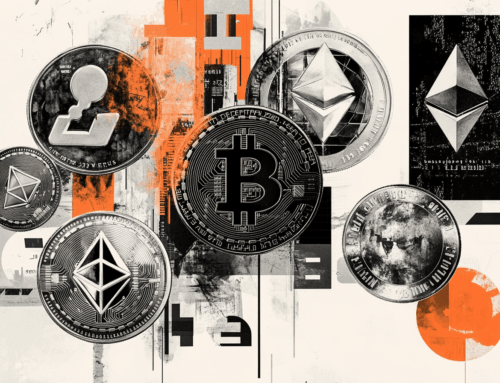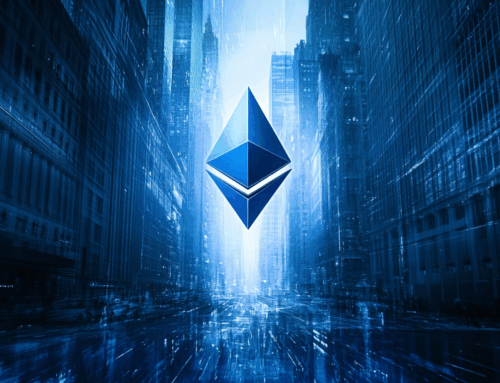ETH Upgrades Expected in 2026: The Calm Before the Next Storm
October 30, 2025
Ethereum doesn’t rest; it delivers upgrades one after another. Every year, it finds a new way to reinvent itself, like an artist who’s been in the game for over a decade but still manages to drop something fresh that makes the crowd go quiet. And as 2026 edges closer, the talk in the crypto sector isn’t about whether Ethereum’s still relevant because everyone knows that it is; it’s about how far it’ll go this time as everyone tries to make a long-term ETH price prediction. Because here’s the truth: while most altcoins are busy fighting for scraps, Ethereum is rewriting the playbook. And what’s coming in 2026 might just push it even further away from the pack.
Ethereum’s journey has never been smooth, but a mix of brilliance and chaos, success and controversy. The Merge in 2022 changed everything because the proof-of-work was out, proof-of-stake was in, and the environmental critics finally shut up. But it also set off a chain reaction that hasn’t stopped since. 2023 brought the Shapella upgrade, making staking withdrawals possible. Then came the Dencun upgrade in 2024, which pushed transaction costs down and efficiency up with data sharding and proto-danksharding (yes, it’s challenging to pronounce the word, but the results were clear: the blockchain benefits now from cheaper gas, faster execution, and a smoother user experience). Now, 2026 feels like the next chapter in Ethereum’s long game. It’s not about saving itself anymore; it’s about expanding its reach.
Let’s not sugarcoat it because everyone knows that scalability is Ethereum’s obsession. It’s been chasing that goal since day one. Sure, it made progress, but it still feels like a beast that needs constant taming.
If it were to check the 2026 roadmap, the one insiders whisper about in developer circles it’s clear that the project focuses heavily on rollup efficiency and layer-2 optimization because that’s where Ethereum’s real future lies. Layer-2s like Arbitrum, Optimism, and Base already do the heavy lifting, offloading transactions from the mainnet and reducing congestion. But Ethereum’s next move is to make them smoother, cheaper, and more native with no clunky bridges, no weird workarounds, just pure integration. Imagine sending ETH across networks as easily as sending a text message. That’s the dream of any Eth enthusiast.
If you’ve been following Ethereum’s founder, Vitalik Buterin, you know he doesn’t talk about upgrades like a CEO. He talks like a philosopher with a whiteboard. And his roadmap sounds like a sci-fi trilogy: The Surge, The Verge, The Purge, and The Splurge. In 2026, we’re expected to see real progress on The Verge and The Purge.
- The Verge aims to make Ethereum nodes lighter. Translation? You won’t need a NASA computer to run one. The blockchain becomes more democratized, with more people involved, resulting in fewer points of failure. Validation gets democratized and more people can access it even if they’re not just for techies with server farms.
- The Purge, on the other hand, is Ethereum’s digital detox. It’s all about cleaning up historical data, making the chain leaner and faster. Think of it as deleting old text threads that clog your phone, you keep what matters, and delete everything that doesn’t.
Crypto veterans have learned to live with gas fees like old scars. But new users? They’re not that patient. Ethereum knows this. That’s why part of the 2026 upgrades will target user experience and provide them with smoother wallets, easier payments, and faster confirmations. We’re already seeing hints of it: account abstraction is becoming a real thing, meaning wallets can function more like traditional banking apps, recoverable, programmable, and less terrifying for beginners. It’s a quiet revolution, but it matters. Because if Ethereum wants to stay the backbone of Web3, it can’t just be a playground for developers. It has to be a network for everyone: artists, gamers, entrepreneurs, even your aunt who still calls crypto “the internet money.”
ETH 2.0 Was Just the Beginning
Let’s get one thing straight: the Merge wasn’t the final form. It was the starting line. The real story is modular Ethereum, which is a system where the main chain focuses on security and consensus, while execution happens on external layers. It’s the blockchain version of outsourcing, and it’s genius. By 2026, we’ll likely see a version of Ethereum that feels more like an operating system than a single network. A foundation upon which everything else, DeFi, NFTs, DAOs, even entire economies can run independently while still feeding back into the same security base.
The Real Threat: Complacency
But let’s not pretend it’s all perfect. Ethereum’s biggest threat isn’t Solana or Cardano, it’s itself, as it often happens in life. Because when you’re the leader, it’s easy to get comfortable. To assume everyone will keep building on you because you’re the biggest. But crypto doesn’t work like that. It’s ruthless. Attention shifts fast, and loyalty is fragile. That’s why Ethereum’s developers have to keep making efforts, pushing upgrades, fixing pain points, and staying experimental. If it slows down, even for a year, something new will rise and take a bite. And while Vitalik’s brain can dream up a dozen roadmaps, the execution comes down to the developers and validators who keep this machine running. They’re the unsung heroes of every upgrade, the ones who make sure the dream doesn’t break mid-transaction.
2026 and Beyond
So what’s next? What happens after the upgrades, the patches, the forks, the hype? The industry’s tale is that Ethereum is entering its mature era. Now it’s building legacy one upgrade at a time. It’s still unpredictable, still open to criticism but that’s part of its charm. Every improvement feels earned. Every delay feels human. It’s a network that grows like we do: with effort, with mistakes, with evolution. And that’s why, in 2026, Ethereum isn’t just another blockchain. It’s the blueprint. The gold standard. The tech backbone that keeps crypto culture breathing. Because in a world obsessed with shortcuts and hype cycles, Ethereum’s playing the long game, and it’s still ahead of the curve.
Search
RECENT PRESS RELEASES
Related Post








